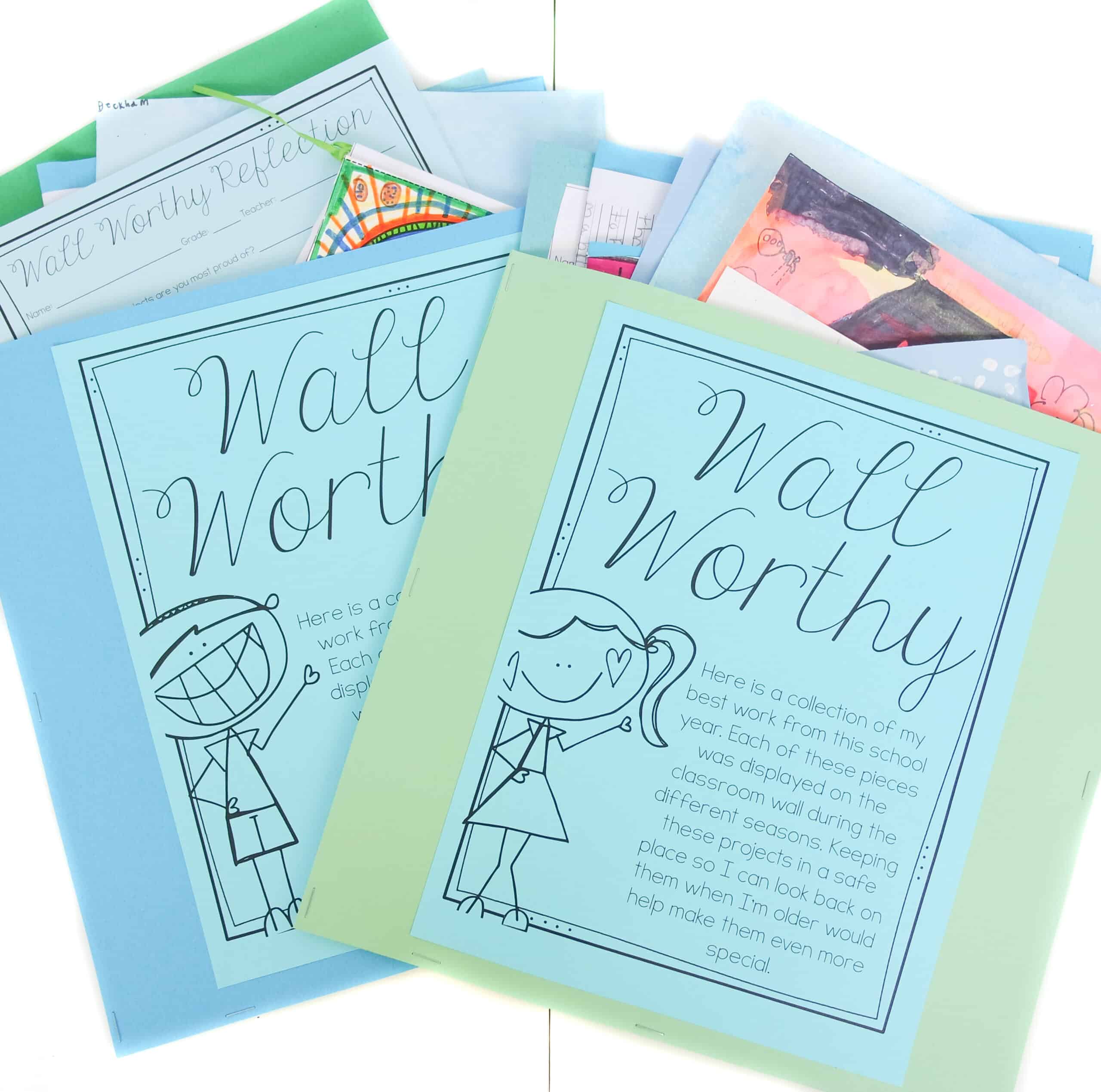
When students are part of the process of creating rules, they have a deeper understanding of them, feel a stronger connection to them, take ownership of them, and hold themselves to a higher standard for following those rules each day. This is why I take time at the beginning of each year to write rules with my students, rather than for my students. I also find great value in revisiting those rules and working together to tweak them throughout the year so a strong environment of respectful and responsible behavior is maintained.
This is an idea I share often in Instagram stories, and one of the most common follow-up questions I am asked is, “How exactly do you create rules with your class?”
This post includes affiliate links for which I may make a small commission at no extra cost to you should you make a purchase.
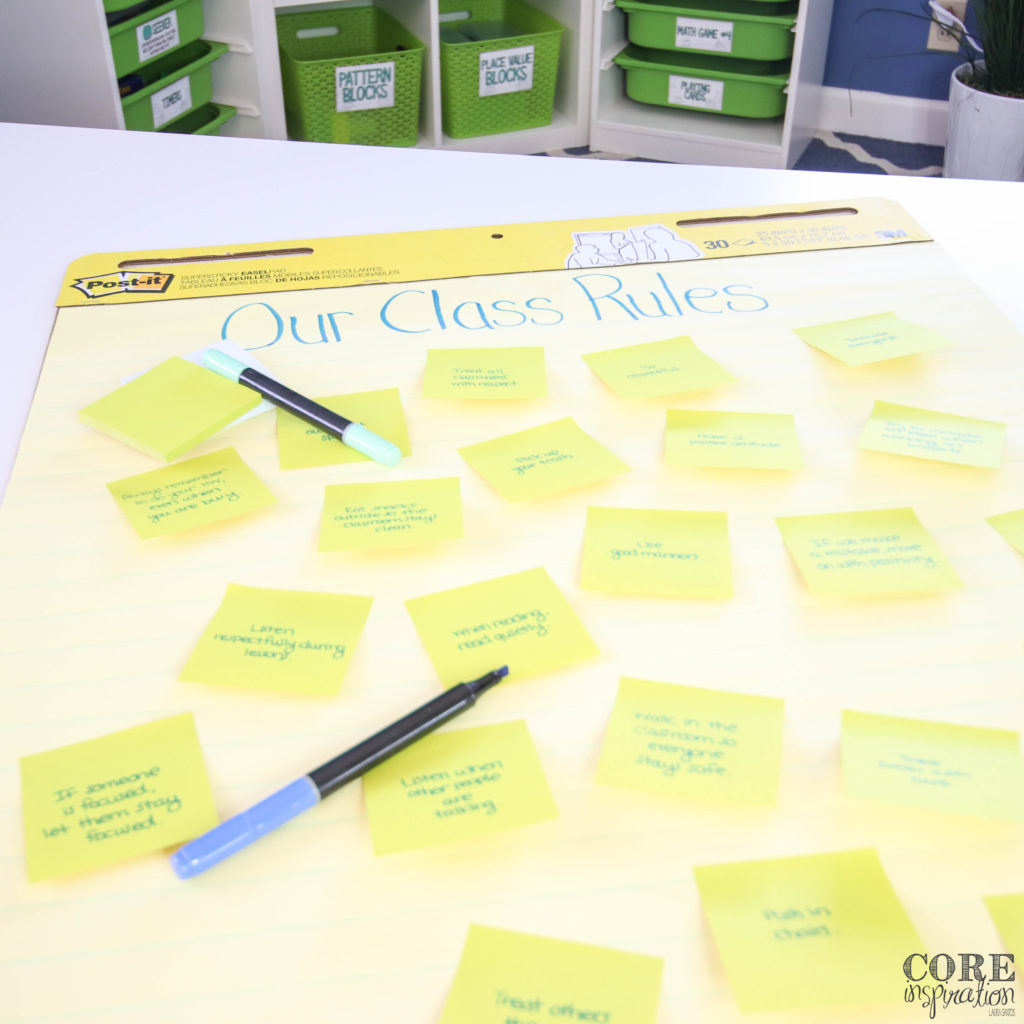
Well, the answer to that question is quite detailed. So, I’ve decided to write out the process I use. This process is deeply rooted in the approach I learned when participating in a four-day Responsive Classroom institute, and I tweaked it slightly to meet the needs of my classroom.
As always, I hope reading about the approach I use will provide you with a springboard for creating your own approach that meets the unique needs of your classroom. Classroom management techniques and systems are areas where customization should be a priority because they work best when they are adapted to fit your personality and teaching style.
Quality rule writing is a multi-day process that I don’t like to rush. What I do like is to have a strong system for behavioral accountability from day 1in the classroom. Holding off until the class rules are written to introduce consequences leads to a lack of structure in those first days of school when structure is needed most.
To avoid this problem, I introduce our Fix It Ticket system on the first day of school. I have a detailed blog post about the exact steps I use to introduce Fix It Tickets on day 1, along with a toolkit that can help you introduce them in your own classroom, but here’s the gist.
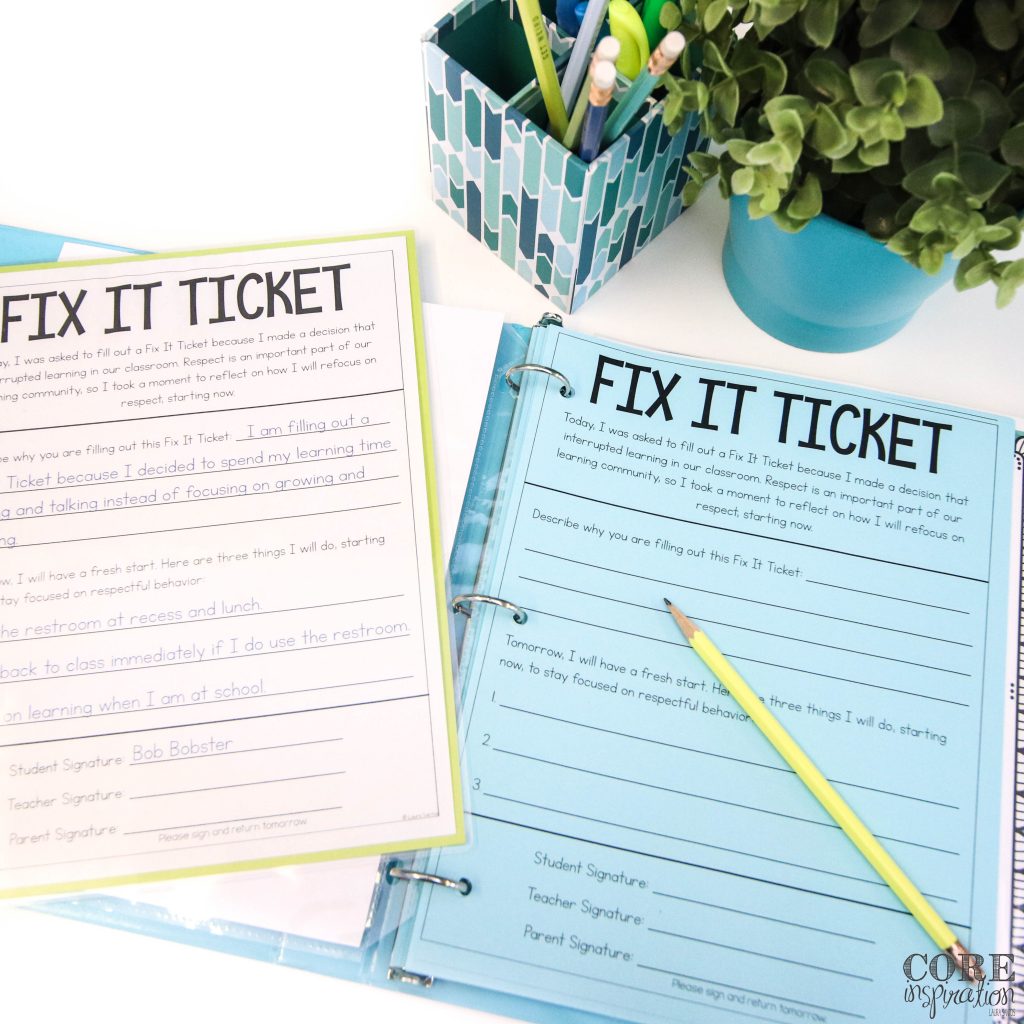
I ask my students, “What are some words you hope to use to describe your classroom this year?” They brainstorm their ideas, write them on sticky notes, and add them to our class anchor chart. We discuss any common themes noticed as their ideas come together. Then, they brainstorm answers to the question, “What types of behaviors should we avoid if we are trying to create the type of classroom you’ve described?” These ideas are also added to an anchor chart and common ideas are grouped together.
Next, we talk about the fact that no one has perfect behavior, and even the most respectful and responsible people make mistakes from time to time. With this idea in mind, I introduce the thought that everyone deserves a moment to take a break when they are struggling with behavior so they are able to cool off, reflect, and move forward in a more respectful way. I introduce the process for taking a break in our classroom – a concept based on the Responsive Classroom approach to teaching and learning. If a student makes a behavior mistake in the classroom, then they are politely asked to take a break, which means:
Throughout the first day of school, they each have the opportunity to practice heading to that spot so they all get a feel for taking a break. This practice emphasizes that taking a break is for anyone at any time needed.
On the second day of school, I introduce the guiding principle of R.E.S.P.E.C.T., which acts as a foundation for our rule writing. The second day activities help students build a stronger understanding of what respectful behavior looks like, sounds like, and feels like.
I begin with a read aloud of Do Unto Otters by Laurie Keller. While reading, I point out how the author shows us what respectful behavior is and what it is not. Following this read aloud, our R.E.S.P.E.C.T. acronym makes its debut.
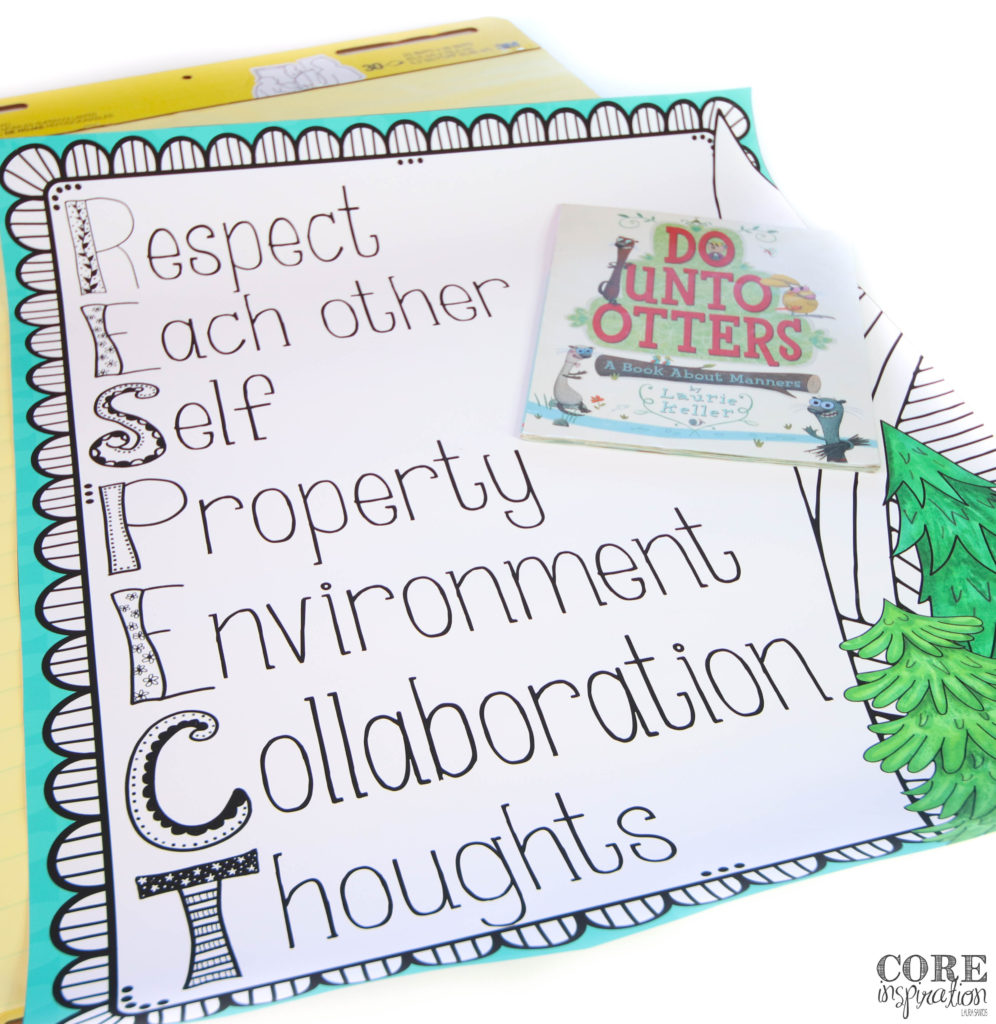
The meaning of each word in the acronym R.E.S.P.E.C.T. is introduced to students, and we brainstorm ways to show respectful behavior in relation to each of those words. Examples include how we show respect to ourselves, to our property, or while collaborating. We then discuss what happens when someone makes the decision not to show respectful behavior.
The consequences include taking a break, followed by the completion of a Fix It Ticket if the student decides to continue making disrespectful behavior decisions within the same day, followed by a conference with the student and his/her parent/guardian if those behaviors continue. Each day, students get a fresh start, and best intentions are always assumed.
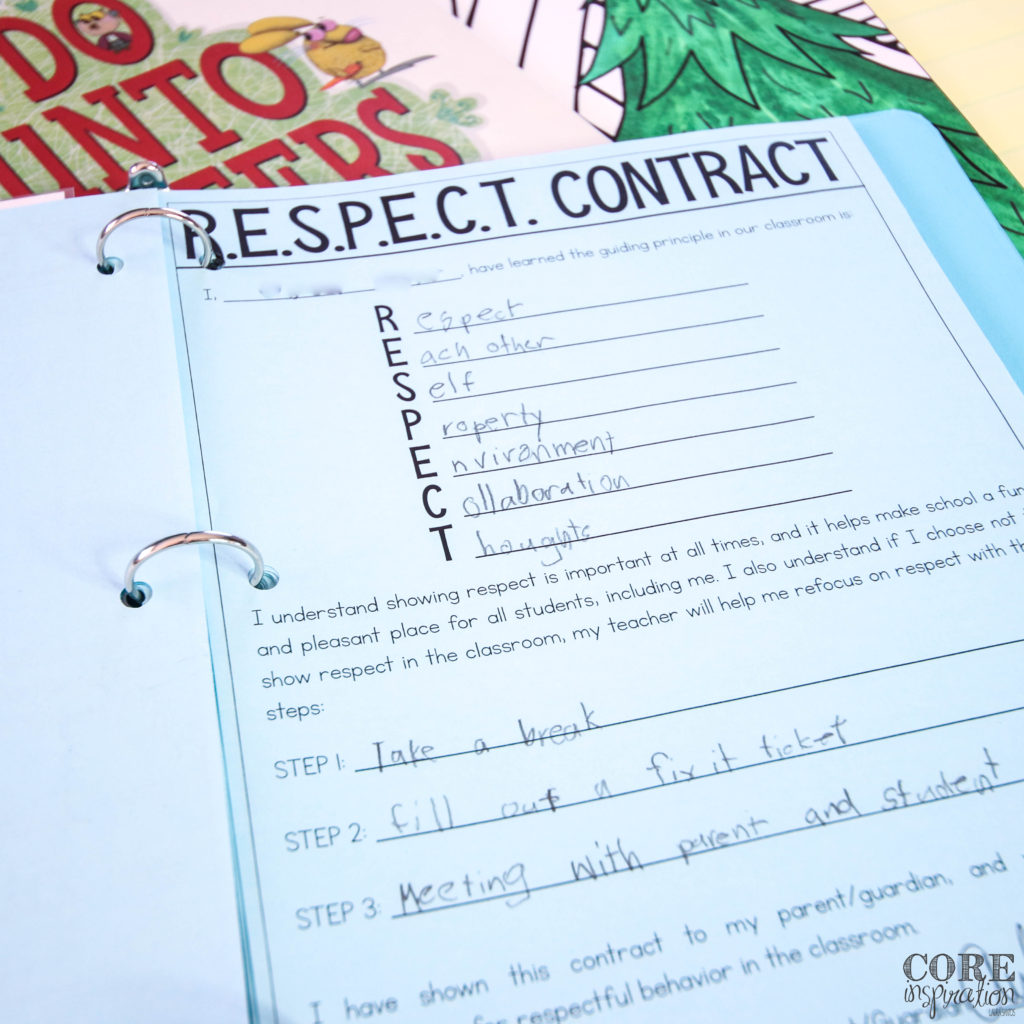
We end day 2’s classroom management session with the completion of the R.E.S.P.E.C.T. contract. This contract:
The contract is taken home to be signed by parents/guardians and due the following day.
On the third day of school, we work as a class to create hopes and dreams for the year. After all, if we are going to work together to write rules that are relevant and meaningful, then we need some context as to what we’re going to be doing each day and why we are doing it. To set the tone for this conversation, I begin with a read aloud of School’s First Day of School by Adam Rex, and then I pose the question, “Why do we come to school?”.
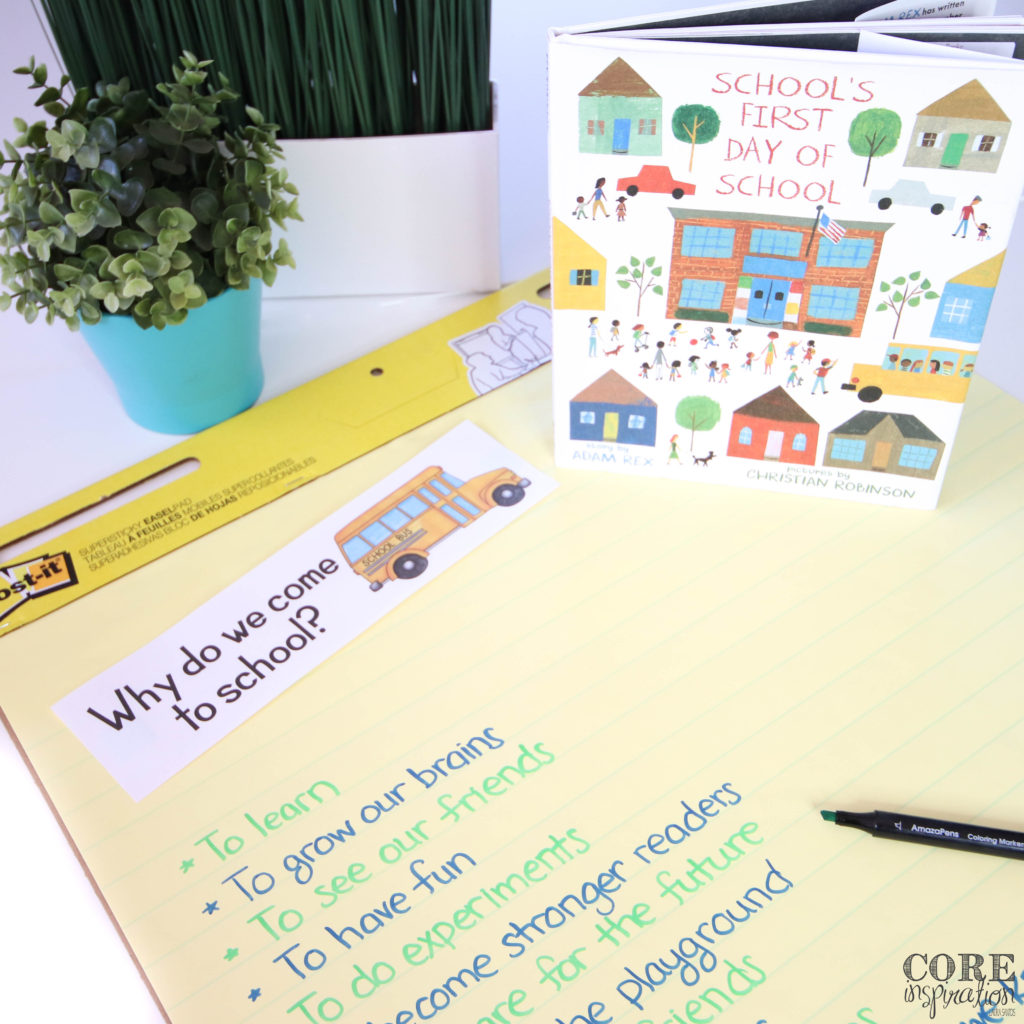
Students share their ideas aloud as I record them on a class anchor chart. After about fifteen minutes of recording ideas, the first part of our brainstorm session comes to a close. I invite students to continue thinking of ideas to add to the chart so we can put the finishing touches on our list after lunch that day. The anchor chart is hung in a prominent spot at the front of the room and revisited after lunch, when we continue to add ideas for an additional five minutes.
After this, I invite students for another read aloud as we gear up for drafting our hopes and dreams for the school year. This time we read Miss Rumphius by Barbara Cooney. We briefly discuss the hopes and dreams of Miss Rumphius before launching into a conversation about our own hopes and dreams for the year. This step of the rule writing process continues to build context for the rules and helps students feel that their interests, ideas, hopes, and dreams are valued in their new classroom community.
To help students think seriously about realistic hopes and dreams for the school year, I share my own hopes and dreams about what we will accomplish, how we will treat one another, the fun we will have, and the time we’ll spend getting to know one another. As I think aloud, I refer to the “Why do we come to school?” anchor chart to help inspire my ideas.
I then introduce another anchor chart with the question, “What are your hopes and dreams for the school year?” We begin with a class discussion where ideas are shared verbally but not recorded. Quick thinkers and eager sharers often have lots to say during this portion of the brainstorm. Hearing these ideas is helpful to students who need a bit more time to dream up their dreams. Students then head to their seats, where they find a sticky note waiting for them. They record between 1-3 hopes and dreams for the school year on their note, and then they come back to the carpet prepared to share the idea they’d like to add to our anchor chart.
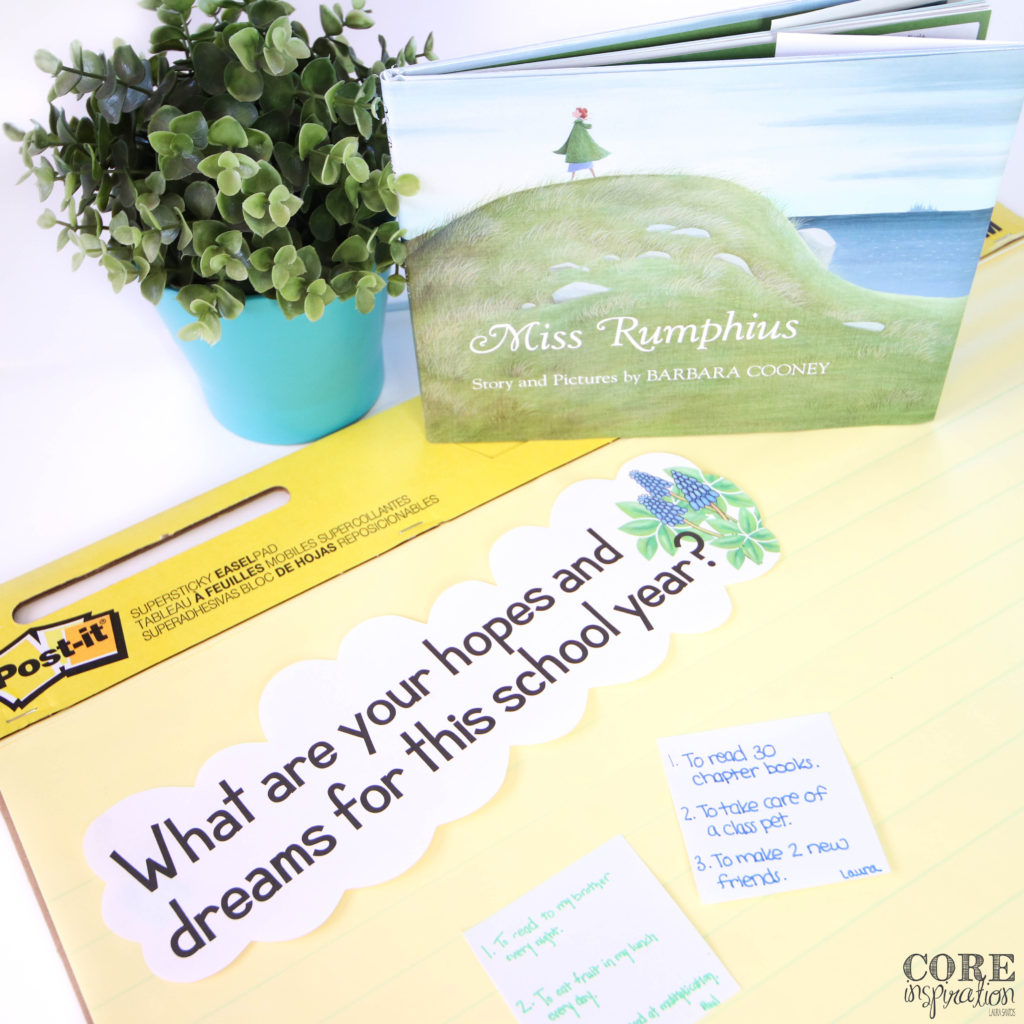
Each child either reads the words from their sticky note themselves before posting it to our anchor chart or asks me to read it for them before posting it. This public sharing of hopes and dreams emphasizes:
Now that we understand the importance of R.E.S.P.E.C.T in our classroom and have heard the hopes and dreams of our classmates, it is time to begin drafting our class rules. I pose the question, “What classroom rules will help our hopes and dreams come true?”
As students share their ideas, I record them on individual sticky notes. If someone mentions a rule that is similar to one already recorded, we put a star on that sticky note to emphasize the fact that multiple people value that rule. I ask students to phrase their rules using positive language. Rather than saying, “Don’t touch other people’s belongings,” we use positive language like, “Keep your hands away from your classmates’ belongings,” or “Ask permission before touching other people’s belongings.” If students have trouble phrasing their rule using positive language, then we work together to make that happen.
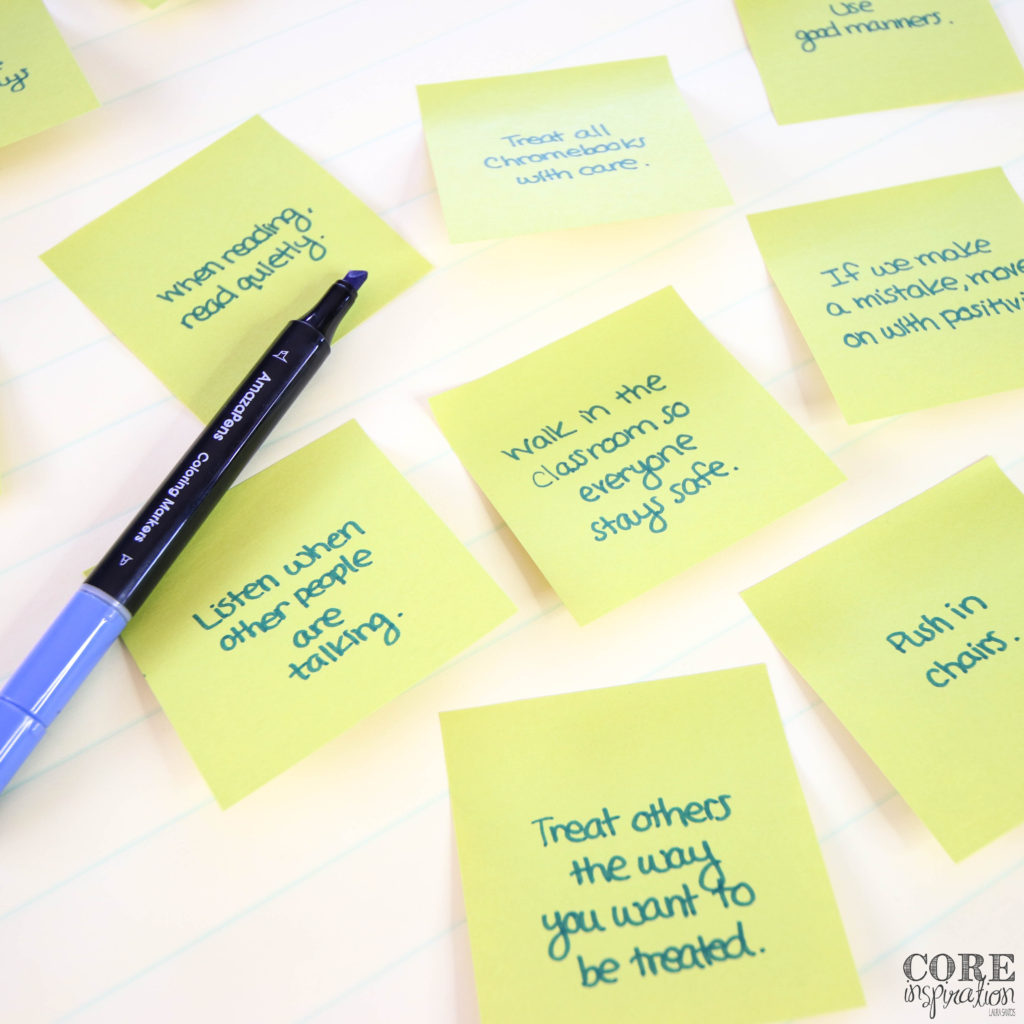
Using positive language when writing rules helps to create an environment where children believe you trust in their ability to cooperate, show respect, and be their best selves. When they feel you believe this of them, they begin to believe this of themselves. In time, students build a more positive identity and develop more awareness and self-control.
At the end of this brainstorm session, our anchor chart is filled with student-created class rules. This anchor chart is hung in a prominent location in the room, and students are asked to continue thinking of any rules they may want to add over the course of the day.
Before school begins on the fifth day of our rule writing process, I take time to sort the rules students drafted the day before into categories. This is when writing the rules on sticky notes really comes in handy. I can simply move them around on the anchor chart without the need to rewrite them on a new chart. Typically, the rules fall into three or four categories from year to year. After sorting is complete, I do not label each category, as students will work together to do that.
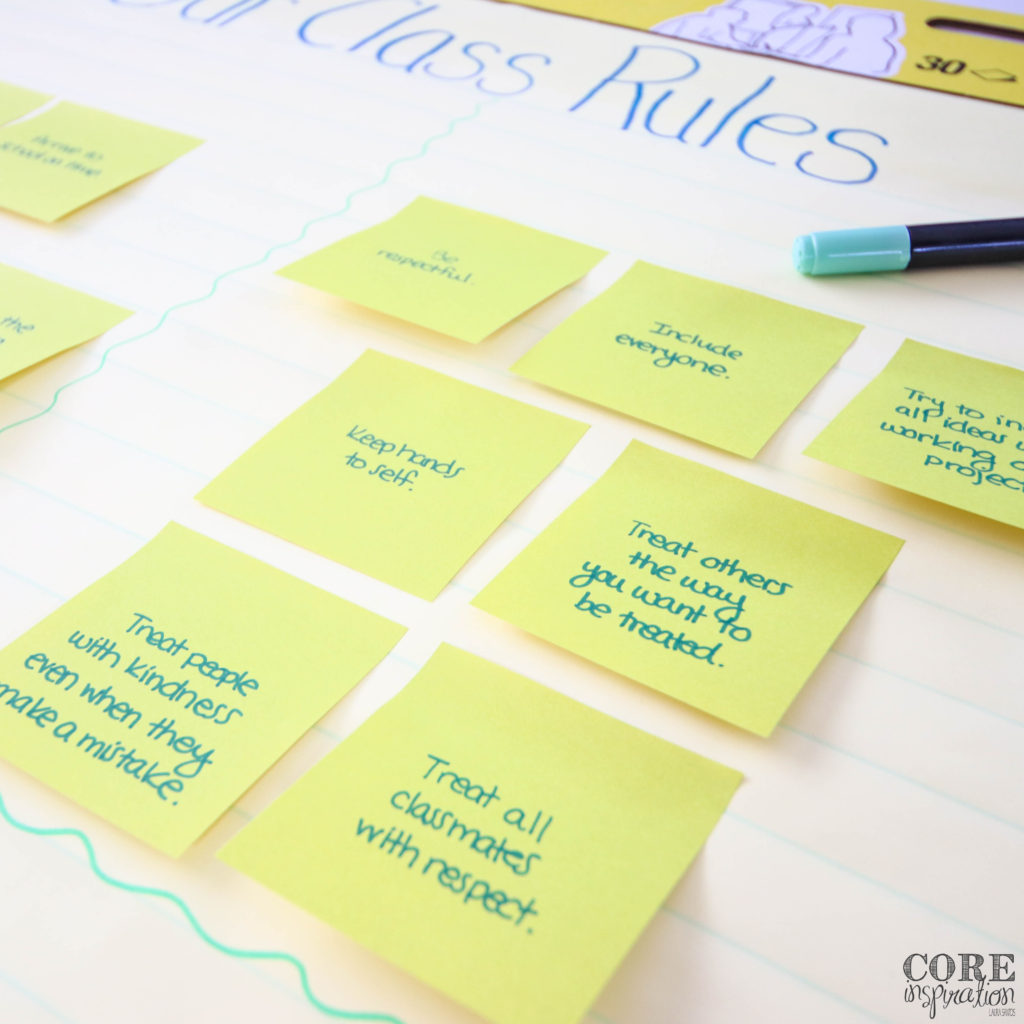
I let the sorted rules chart hang at the front of the room until our rule writing session for that day. My students typically notice the rules have been grouped before the session begins, and some even ask why the anchor chart looks so organized. I respond by asking them to think about why I would have put the rules into groups. This helps warm them up before beginning today’s task of categorizing the rules.
When the session officially begins, I talk about how impressed I am with all the strong rules we have written together but how I’m also feeling like all these rules are a lot to remember. Of course, the students agree. I then challenge them to think of overarching rules for each of the groups they see on our chart. As students share their ideas for overarching rules, I jot them down on my whiteboard, and then we vote on which of the rules mentioned should be our final overarching rule for each category. This leaves us with 3-4 overarching rules for the year.
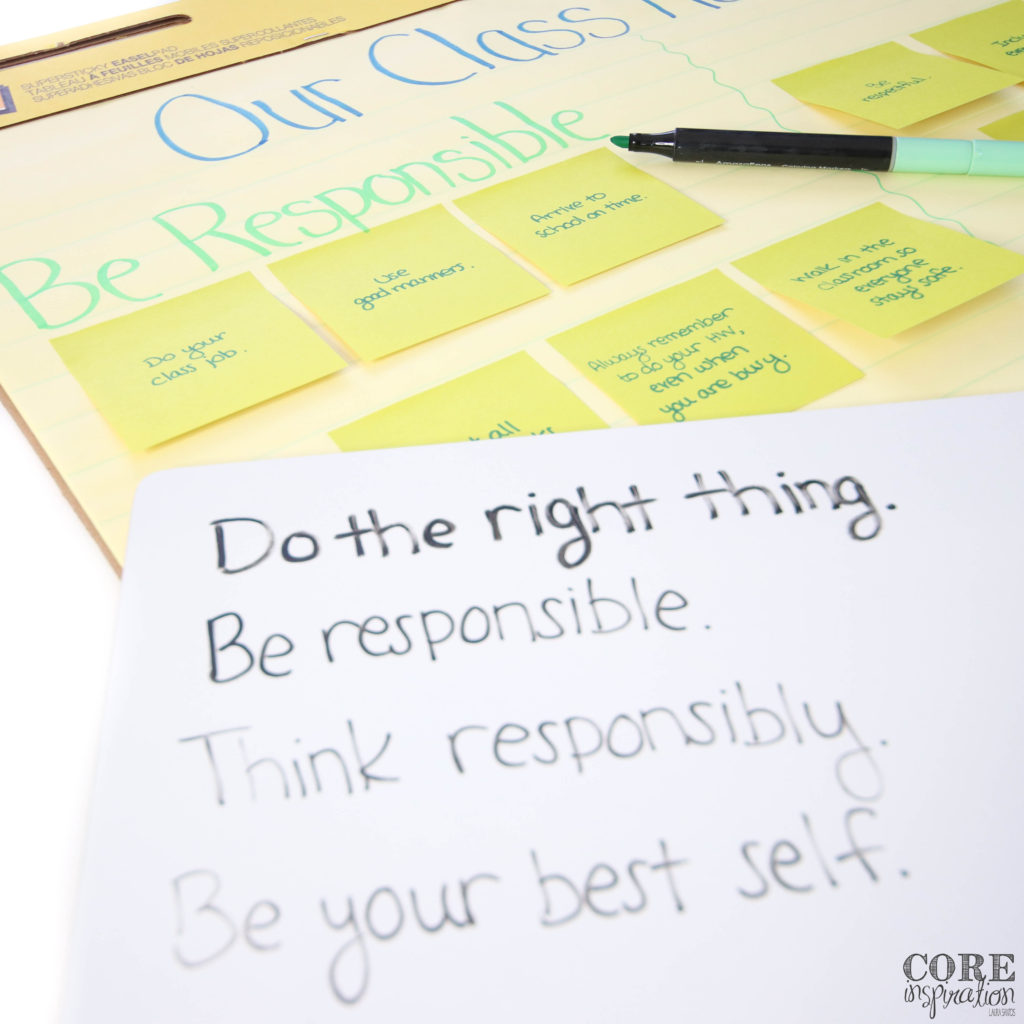
These overarching rules are written as a heading for each group of rules on our anchor chart.
On the final day of our rule creation process, we make our class rules official by signing our names and publishing our rules in a prominent place in our classroom. This looks different from year to year, but it’s always a very special moment of celebration after all those days of working hard to create rules that we agree on and value. Here are some of the ways our rules have been published:
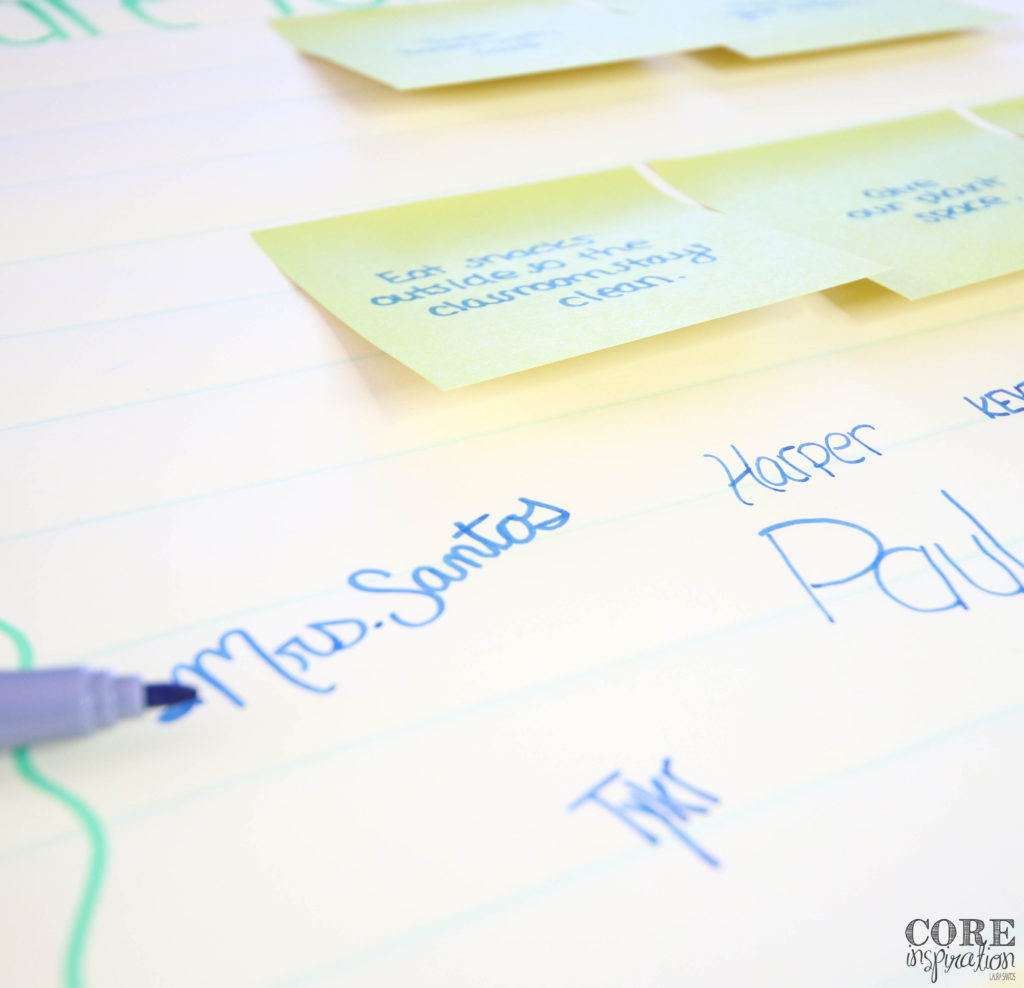
Regardless of how our rules are published, all the anchor charts we created during this process are saved in a safe place and brought out multiple times throughout the year as needed. I find that revisiting the rule creation process and refocusing our attention on the rules we created together has an undeniable power in helping students realign their behavior. Some of my favorite times to revisit our class rules include:
If you are ready to teach students who:
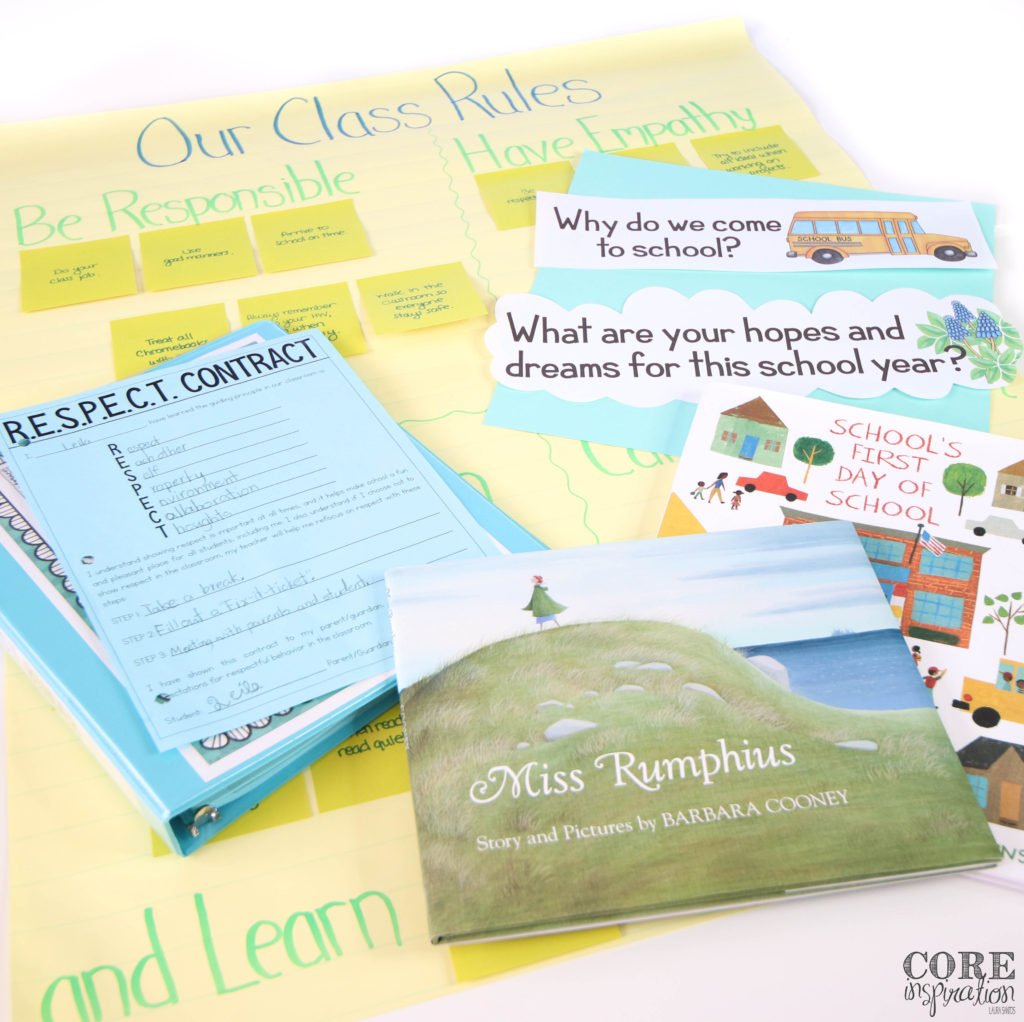
Then it’s time to give this process a try. These are the resources I mentioned throughout this blog post that can make prepping for your rule writing sessions a breeze (affiliate links included):
I’d love to hear about your rule writing experience, or any questions you may have, in the comments below. For more information about my classroom management approach, be sure to follow along on Instagram or check out the Classroom Management section of this site.
This post contains Amazon Affiliate links to make it easier for you find the supplies shared in this post. To see all my favorite Amazon finds, visit my Amazon Influencer page here.

I’ve been an elementary teacher for ten years, and love sharing tips and resources that make differentiated learning more manageable for you. Thank you for visiting.
Learn More
Dropping by with weekly tips, classroom strategies, and free content created with you in mind.
Join me and other 2nd through 4th grade educators in the Teaching with Core Inspiration Facebook Group. This is a place to collaborate, ask questions, and learn how teachers like you are using Core Inspiration resources in their classrooms. Hope to see you there!
© 2024 Core Inspiration ∙ Website by KristenDoyle.co
3 Responses
I love how detailed this process is! Thank you! I am a first year fourth grade teacher and wondering if you think this process will be suitable for grade 4? Do you think the read alouds will align with this grade level. Sometimes, I have a hard time determining what picture books might be “too easy” for upper elementary grades. Thanks in advance for your insight 🙂
Hi Laura! I have loved the classroom economy and am super excited to try this resource as well. One question I have though is that I have 2nd graders and I usually have some pretty emergent/hesitant writers. I think some may feel daunted by having to write it all out on a fix-it-ticket. What do you suggest or what have you done with kids who feel like the writing is too much or too hard?
Hi Laura, this is such a great question! If they feel daunted about writing, I have them draw a picture to help them reflect. Modeling this with a really simple sketch that shows what went wrong and what they plan to do to fix it and move forward works well. I hope this is helpful! 🙂
Warmly,
Laura